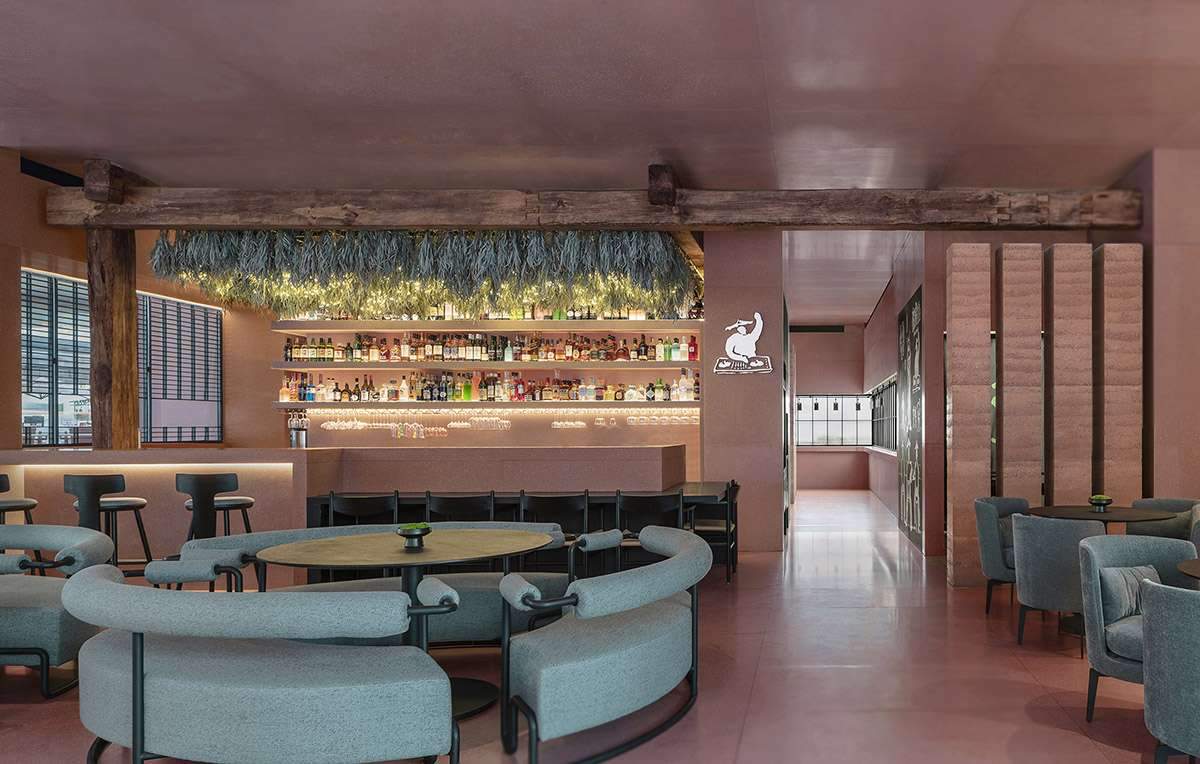Farm to Table Restaurant by Nature Times Art Design,
The design and creation of Original Chicken, a farm-to-table restaurant chain,
was completed by Nature Times Art Design, incorporating a saturated color palette into the interiors of One Avenue.
The 300 square meter restaurant is located in Shenzhen,
at the corner of the ground floor of an iconic shopping complex in Futian CBD.
The restaurant has a “back to the farm” theme and explores an experimental reform of the traditional Chinese food experience.
Original Chicken is a medium and high quality Chinese brand in catering business with nearly 20 years history.
The brand has pioneered the “farm-to-table” whole-chain standard in the Chinese fast food sector,
by providing reliable sources of serving food ingredients.
The restaurant chain has more than 800 restaurants,
and its first restaurant in southern China is located in Shenzhen, a young and lively garden city.

Design Features
The design of this restaurant responds to the brand’s philosophy of ecological
and organic food, and draws inspiration from nature and soil.
The designers adopted a low-saturated color palette extracted from the soil,
and applied it to interior surfaces made of natural materials such as soil, wood, stone, cotton and hemp.
In order for diners to live a new, healthy and sustainable lifestyle,
and also to guide people in the bustling city to pursue sustainability.
The façade is mainly red and embedded with metal grilles and huge transparent
glass, revealing a sense of freedom and lightness.
The outdoor seating area and the beautiful green garden match the hot local climate,
welcoming people of all ages with a friendly gesture.
The overall design shows the coordinated integration of city and farm, through red and green hues,
and simple, sophisticated curves and straight lines.
A self-service system has also been introduced into the 300 square meter interior,
where double circulation ways separate the self-service area and the dining area invisibly.
Regular berms set a gentle and simple spatial tone, and at the same time bring a warm ambiance full of love for the immigrant city.
Glass windows in the ordering area reveal the natural texture of shoji paper,
which becomes malleable after modern treatments.
The menus hanging from the window are written in Arabic calligraphy,
signifying the traditional magic of Eastern cultures.

Farm to Table Restaurant by Nature Times Art Design
The designers used aged wood, straw art installations, sophisticated hand-crafted details,
dynamic electronic displays and interesting Chinese-style illustrations.
An integrated combination of different factors was made,
to complete the spatial narrative about rice culture,
in order to convey the idea of simplicity in Chinese agricultural culture to the urban population.
Modern and concise design languages are also combined with a philosophy of serving simple
and organic foods, which produces a completely new image and experience different from traditional fast food restaurants.
The 24-hour restaurant engenders a casual urban lifestyle, which is reflected in the space itself.
The innovative mix of functions including fast food, afternoon tea
and bar reinforces its connection to the city, striking a balance between fast-paced life and leisure.

It also provides guidelines for socializing and diverse lifestyles.
The design covers many aspects including graphic perception,
spatial compositions, and landscape creation that fuses emotions and aesthetics.
It ultimately enhances the brand concept to emphasize experience and socialization,
restoring trust between the people, the city, the people, the food, and the people themselves.


 العربية
العربية